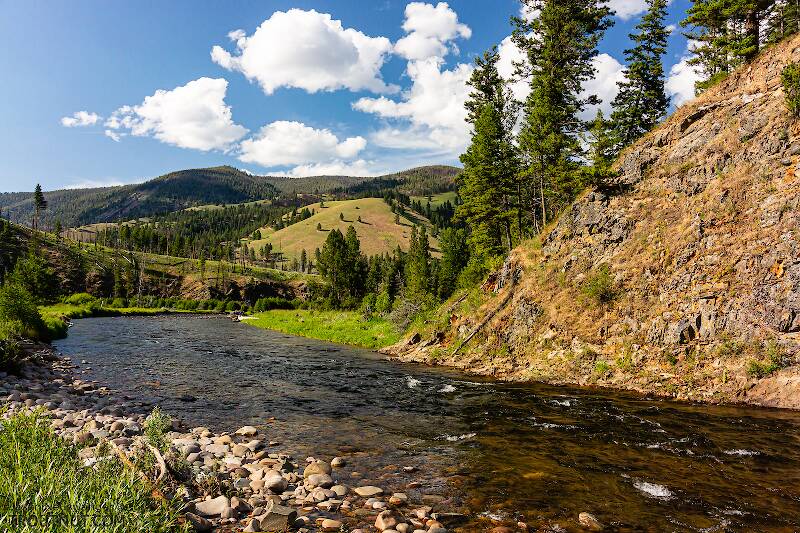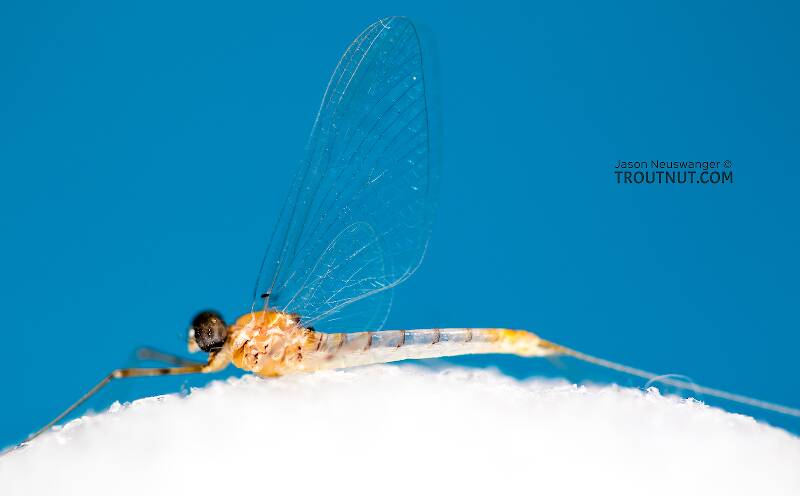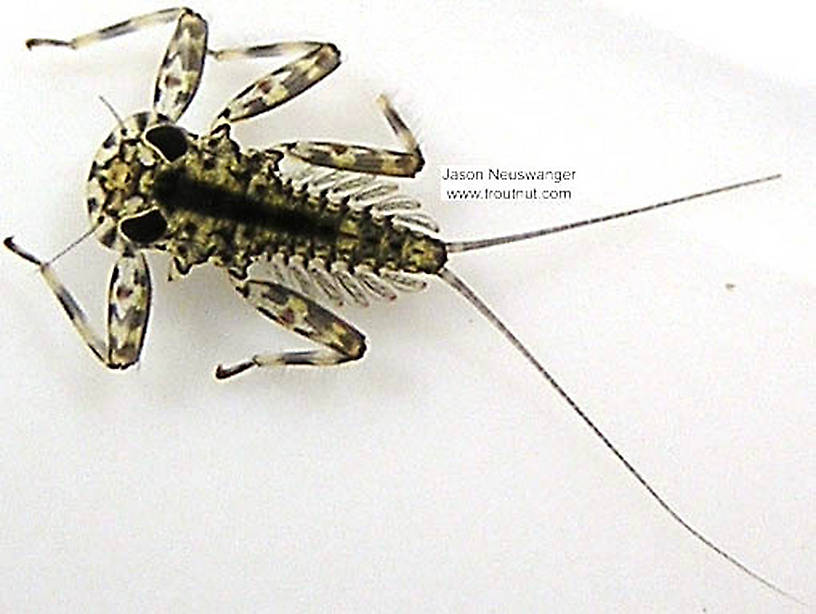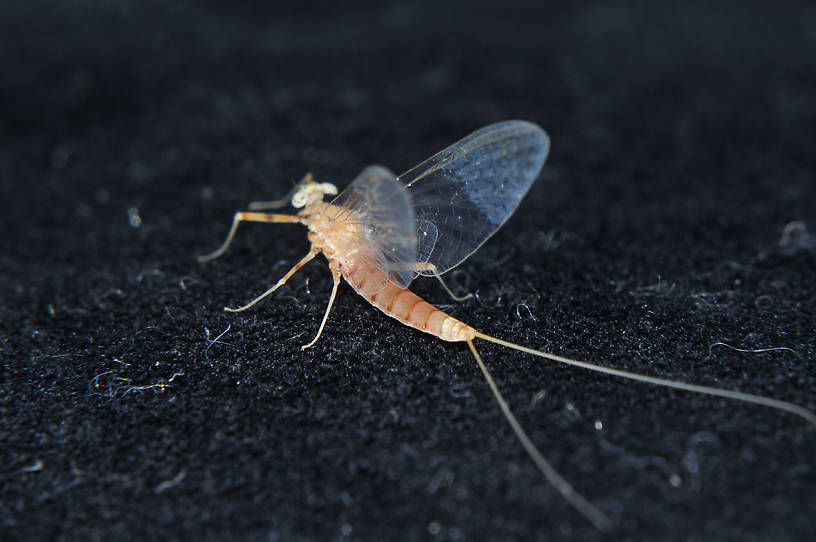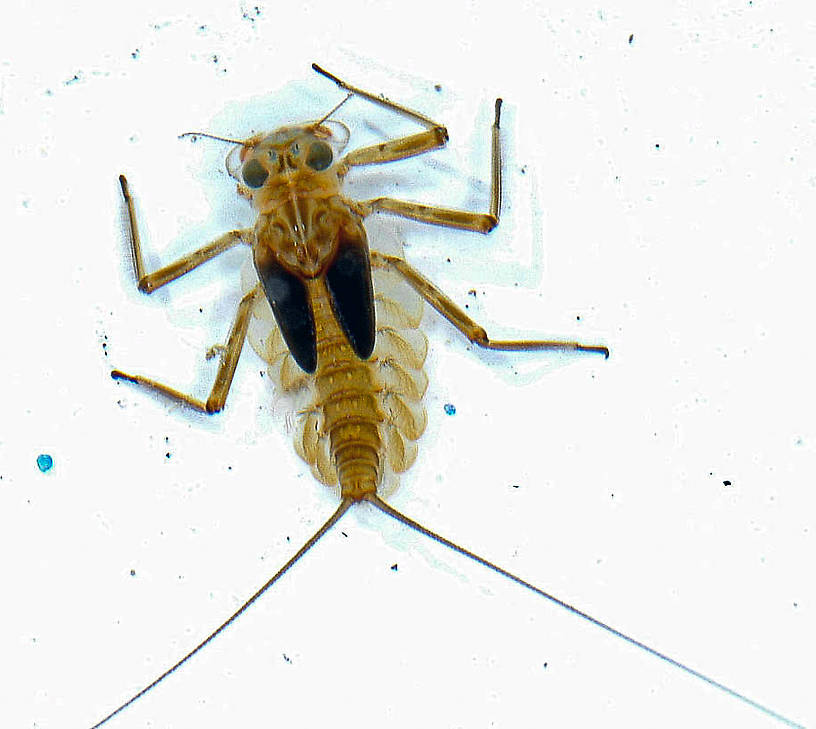
Blue-winged Olives
Baetis
Tiny Baetis mayflies are perhaps the most commonly encountered and imitated by anglers on all American trout streams due to their great abundance, widespread distribution, and trout-friendly emergence habits.
Featured on the forum

This specimen resembled several others of around the same size and perhaps the same species, which were pretty common in my February sample from the upper Yakima. Unfortunately, I misplaced the specimen before I could get it under a microscope for a definitive ID.

Troutnut is a project started in 2003 by salmonid ecologist Jason "Troutnut" Neuswanger to help anglers and
fly tyers unabashedly embrace the entomological side of the sport. Learn more about Troutnut or
support the project for an enhanced experience here.
Slate Brown Duns
Like most common names,"Slate Brown Dun" can refer to more than one taxon. They're previewed below, along with 6 specimens. For more detail click through to the scientific names.
Mayfly Genus Epeorus
These are sometimes called Slate Brown Duns.
There is remarkable variety of form and color within this prolific genus of fast-water mayflies. Different species are found across the country, and several cause good hatches. Fly anglers are likely to encounter the lesser species on occasion, too.
The best Epeorus hatch in the East is Epeorus pleuralis, the famous Quill Gordon, the first abundant large mayfly hatch of the year. Epeorus vitreus comes a little later and is important in both the East and Midwest.
In the West, Epeorus longimanus dominates in fast, high-altitude streams, while Epeorus albertae inhabits slower and lower waters.
The best Epeorus hatch in the East is Epeorus pleuralis, the famous Quill Gordon, the first abundant large mayfly hatch of the year. Epeorus vitreus comes a little later and is important in both the East and Midwest.
In the West, Epeorus longimanus dominates in fast, high-altitude streams, while Epeorus albertae inhabits slower and lower waters.
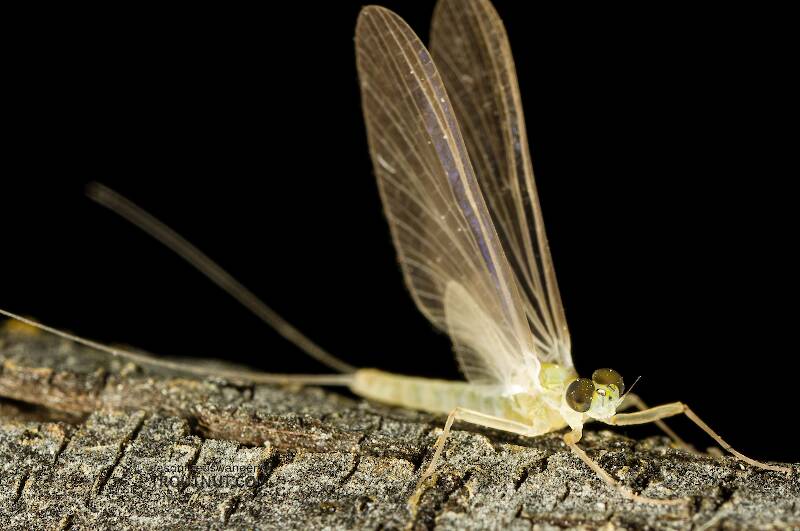
The lack of a darkened humeral crossvein rules out Epeorus albertae and Epeorus dulciana. The lack of a dark macula on the forefemora rules out Epeorus longimanus. The small size rules out Epeorus grandis and Epeorus permagnus. That leaves as the only possibility known in Washington state Epeorus deceptivus. It is a small species, although not reportedly quite as small as this specimen. I couldn't find anything in the species description in Traver (1935) to definitively confirm or rule out the species ID, given that I don't have the preserved specimen to check under a microscope, but it has to be either deceptivus or something not yet reported in Washington.
It was collected at the same time as a similar-sized female dun.
It was collected at the same time as a similar-sized female dun.
See 55 more specimens...
Mayfly Species Epeorus longimanus
These are sometimes called Slate Brown Duns.
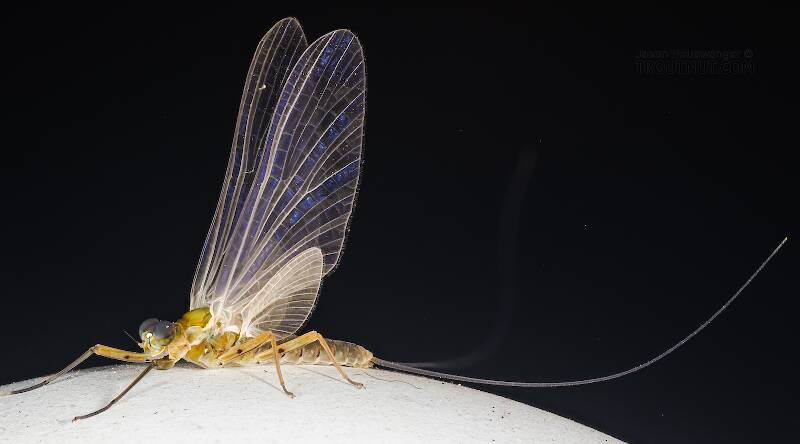
Identification of this one was as follows. Body 9 mm, wing 11 mm.
Both Epeorus albertae and Epeorus dulciana should have a conspicuously darkened humeral crossvein in the forewing. This one doesn't.
The foretarsal claws are dissimilar (one sharp, one blunt), which also rules out the Epeorus albertae group.
The dark macula on the forefemora rules out Epeorus deceptivus, which is also supposed to be a little bit smaller.
Both Epeorus grandis and Epeorus permagnus should be much, much larger.
Of the species known to be present in Washington, this leaves only Epeorus longimanus, which is exactly the right size. The key to male spinners in Traver (1935) describes distinctive markings that are visible (although more faintly) in this dun: “Black posterior margins of tergites do not extend laterally to pleural fold, but an oblique black line form this margin cuts across poster-lateral triangle to pleural fold.”
Both Epeorus albertae and Epeorus dulciana should have a conspicuously darkened humeral crossvein in the forewing. This one doesn't.
The foretarsal claws are dissimilar (one sharp, one blunt), which also rules out the Epeorus albertae group.
The dark macula on the forefemora rules out Epeorus deceptivus, which is also supposed to be a little bit smaller.
Both Epeorus grandis and Epeorus permagnus should be much, much larger.
Of the species known to be present in Washington, this leaves only Epeorus longimanus, which is exactly the right size. The key to male spinners in Traver (1935) describes distinctive markings that are visible (although more faintly) in this dun: “Black posterior margins of tergites do not extend laterally to pleural fold, but an oblique black line form this margin cuts across poster-lateral triangle to pleural fold.”
See 2 more specimens...

